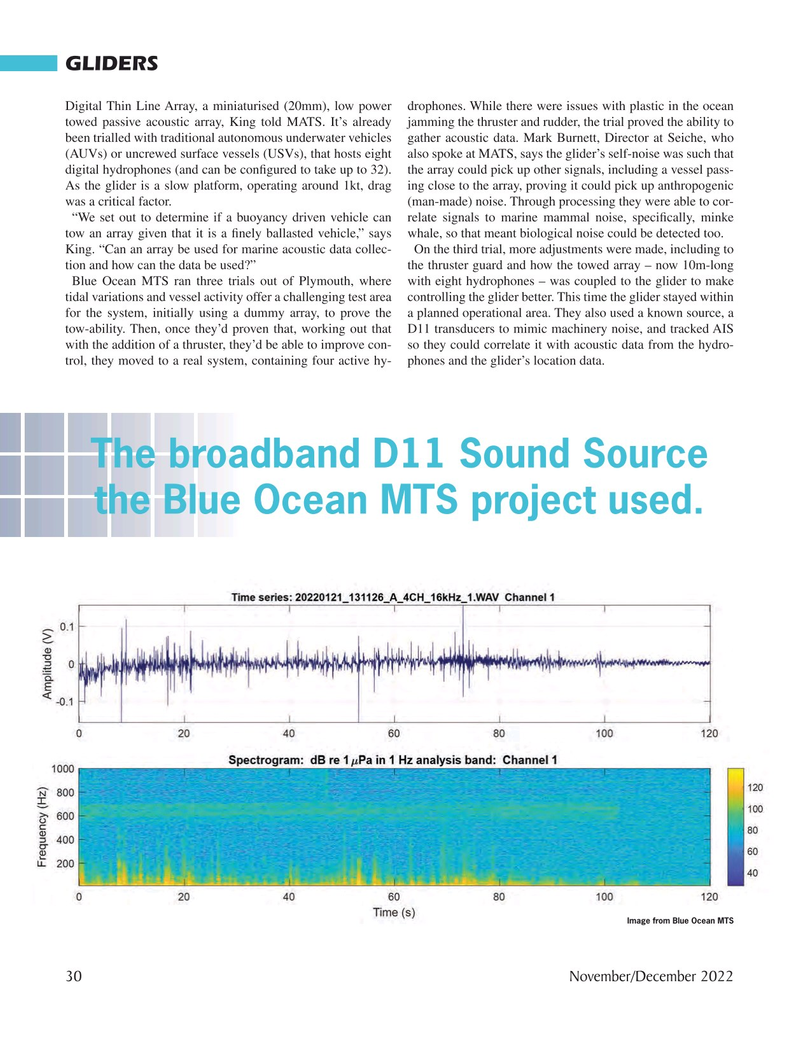
Page 30: of Marine Technology Magazine (November 2022)
Read this page in Pdf, Flash or Html5 edition of November 2022 Marine Technology Magazine
GLIDERS
Digital Thin Line Array, a miniaturised (20mm), low power drophones. While there were issues with plastic in the ocean towed passive acoustic array, King told MATS. It’s already jamming the thruster and rudder, the trial proved the ability to been trialled with traditional autonomous underwater vehicles gather acoustic data. Mark Burnett, Director at Seiche, who (AUVs) or uncrewed surface vessels (USVs), that hosts eight also spoke at MATS, says the glider’s self-noise was such that digital hydrophones (and can be con? gured to take up to 32). the array could pick up other signals, including a vessel pass-
As the glider is a slow platform, operating around 1kt, drag ing close to the array, proving it could pick up anthropogenic was a critical factor. (man-made) noise. Through processing they were able to cor- “We set out to determine if a buoyancy driven vehicle can relate signals to marine mammal noise, speci? cally, minke tow an array given that it is a ? nely ballasted vehicle,” says whale, so that meant biological noise could be detected too.
King. “Can an array be used for marine acoustic data collec- On the third trial, more adjustments were made, including to tion and how can the data be used?” the thruster guard and how the towed array – now 10m-long
Blue Ocean MTS ran three trials out of Plymouth, where with eight hydrophones – was coupled to the glider to make tidal variations and vessel activity offer a challenging test area controlling the glider better. This time the glider stayed within for the system, initially using a dummy array, to prove the a planned operational area. They also used a known source, a tow-ability. Then, once they’d proven that, working out that D11 transducers to mimic machinery noise, and tracked AIS with the addition of a thruster, they’d be able to improve con- so they could correlate it with acoustic data from the hydro- trol, they moved to a real system, containing four active hy- phones and the glider’s location data.
The broadband D11 Sound Source the Blue Ocean MTS project used.
Image from Blue Ocean MTS 30 November/December 2022
MTR #8 (18-33).indd 30 11/28/2022 3:22:22 PM

 29
29

 31
31
